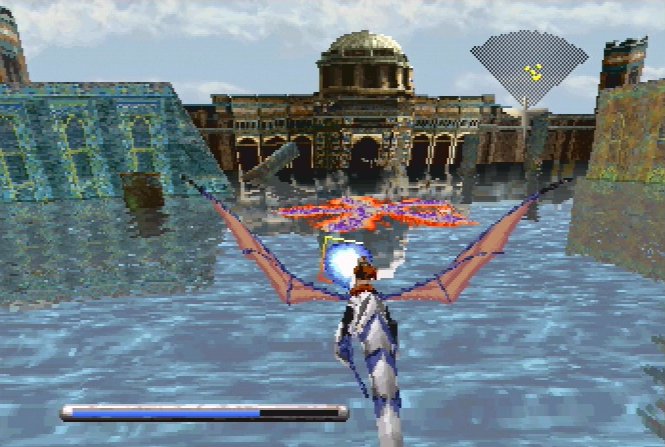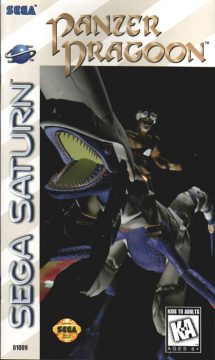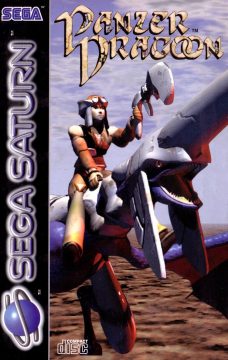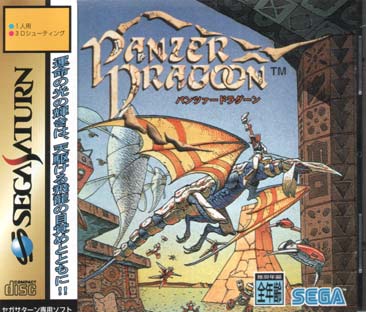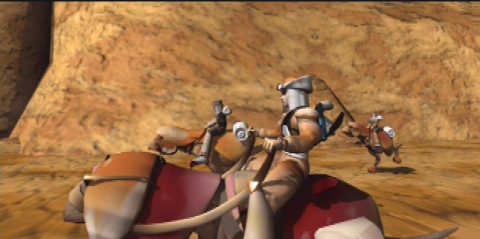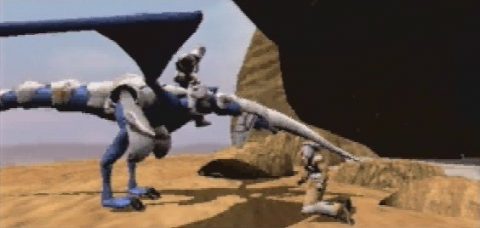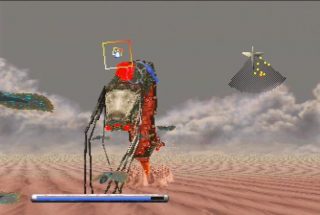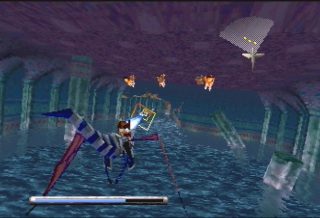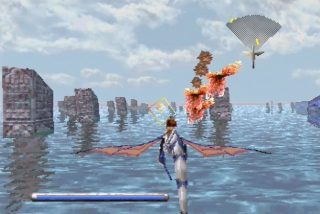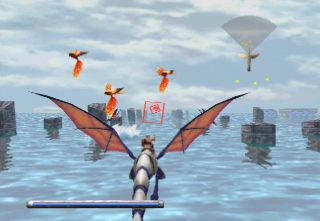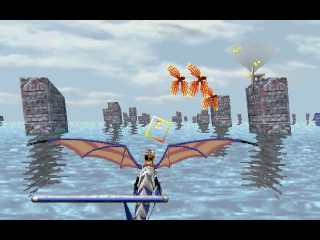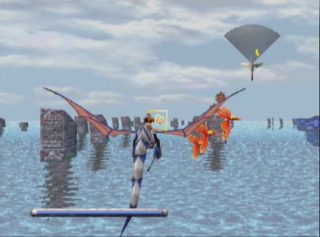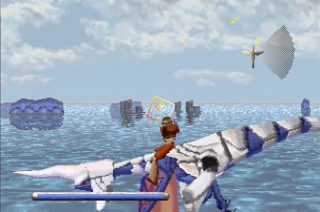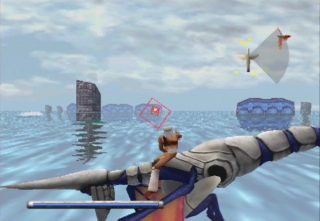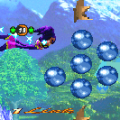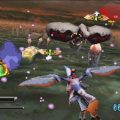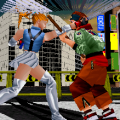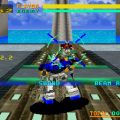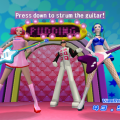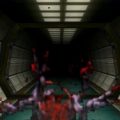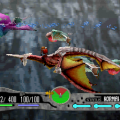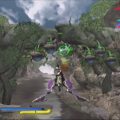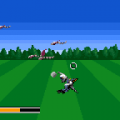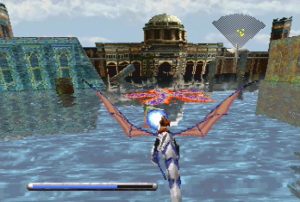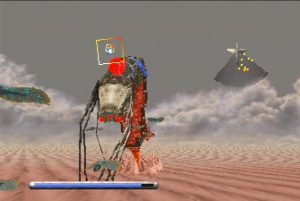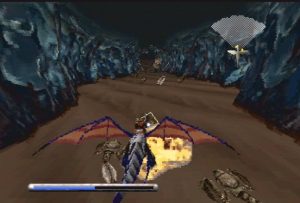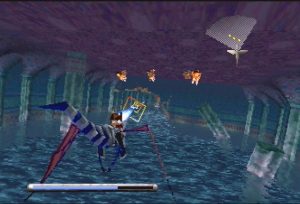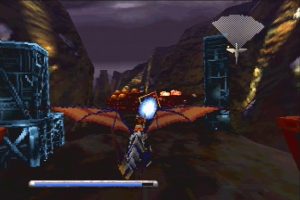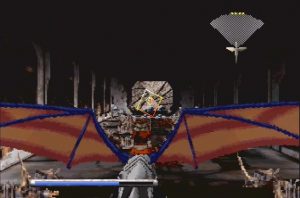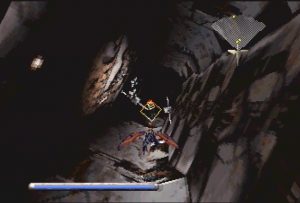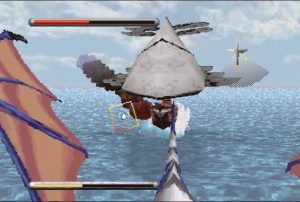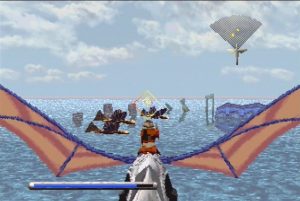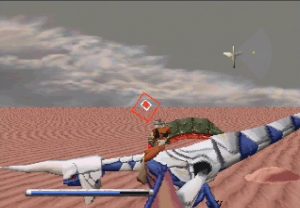The beginning days of the Saturn were dark indeed. Sega was primarily counting on home conversions of Virtua Fighter and Daytona USA to carry its hype, especially during the summer of 1995, when it was surprisingly launched at a rather pricey $400. Although fans gobbled them up, Namco had a one-two punch of Tekken and Ridge Racer, which were being released for Sony’s brand new PlayStation. Despite not having quite the same level of street cred, they both looked much better, and helped begin Sony’s dominance in the console gaming field. Meanwhile, Sega scrambled to make its Virtua Fighter port look less embarrassing with the release of Virtua Fighter Remix, and tried to create a number of other properties such as Clockwork Knight and Bug!, neither of which were terribly impressive.
In these dark early days, one of the only truly original titles that Sega fans could get excited about was Panzer Dragoon, created by a Sega division known as Team Andromeda. Although it was specifically designed for the home console, Panzer Dragoon felt much like an arcade game – it was short and shallow, but remarkably pretty, at least for the time. In many ways, Panzer Dragoon is a light-gun game without the light gun – the technical term for this is a “rail shooter”. Although you pilot a flying dragon, the game’s path is completely pre-calculated, so all you need to do is shoot at enemies and dodge incoming fire. In all games, you have two weapons – a standard gun, and a lock-on laser, which is activated by holding down the fire button, targeting several enemies, then releasing. You’ll then send out a homing laser which decimate – or least badly wound – whatever is in your sights. The only real freedom you have is the ability to turn your viewpoint for a 360 degree view of the landscape as you fly over the game’s desolate landscape, which is activated by hitting the left or right trigger buttons.
Since enemies come from all angles, being able to shoot in any direction is key to survival, although it also contributes to one of Panzer Dragoon‘s biggest issues – sometimes, there’s just way too much going on at once. Short of spinning the view around rapidly, the only way to detect incoming enemies is by paying attention to the radar at the top of the screen. Before you get used to it, you’ll find yourself tracking the enemies’ position frantically, until you can finally target them, only to find out that they’ve already fired off a few shots and done some damage to your dragon. In many cases, the most efficient way to combat enemies is simply to play through the levels over and over, and memorize when and where the enemy formations pop up. It’s frustrating to get the hang of at first, but the learning curve is almost a necessity, because the Saturn Panzer Dragoon games are remarkably short, and needed some kind of staying power.
There are other issues that take some adjusting – you don’t directly control your dragon, but rather, you control the targeting cursor, and the dragon just sort of follows. It’s strange to feel the disconnect between the beast you’re piloting, especially if you’re more familiar with similar games like Nintendo’s Starfox 64. It doesn’t help that trying to dodge enemy attacks can be quite difficult due to both the controls and perspective – most of the time, it’s better just to try to shoot down enemy projectiles than rather dodge them, which can occasionally be a fruitless affair.
Despite these quirks, Panzer Dragoon is still remarkably fun to play, and most of this lies within its gorgeous visuals. The Saturn wasn’t exactly a 3D powerhouse, and the instalments for that system look a bit aged, but the actual artwork is spectacular. Drawing inspiration from the works of French artist Mœbius (who provided some illustrations for the original game), Hayao Miyazaki’s Nausicaä of the Valley of the Wind, and David Lynch’s Dune movie (complete with sandworms), the world of Panzer Dragoon consists of expansive, barren landscapes filled with strange beasts and other monstrosities out to destroy the remnants of humanity. It’s a masterful blend of fantasy and science fiction that’s rarely pulled off in any other medium. The levels stretch from expansive oceans to barren deserts to the winding tunnels of lost ruins. It takes a lot of effort on the graphic designers part to take such dark and dismal landscapes and turn it into something of beauty. Also, the enemies in Panzer Dragoon don’t just explode when they die – they literally fall apart at the seams. There’s rarely a thing more satisfying than targeting a whole school of flying fish-things, hearing the beautiful chirp of the lock-on cursor, unleashing a hell storm of lasers, and watching the dismembered chunks of your former foes fall helplessly to the ground.
Panzer Dragoon takes place in a post apocalyptic world where most of the land is barren, save for expansive, empty oceans. It seems that humanity brought about its near demise through some nasty genetic tinkering, resulting in strange monsters that overrun the planet. Most of the game’s plot revolves around the relics and ruins left behind from humanity’s old age, especially huge structures called Towers, which control great portions of the land.
Nearly all of the game’s dialogue is spoken in what has been dubbed “Panzerese”, a made-up language which is apparently a combination of Ancient Greek, Latin and Russian. The music is the first game has some stirring orchestral pieces, but the rest of the music primarily consists of synthetic beats reminiscent of Vangelis or Toto’s work on the Dune movie. Although much of the music is subdued, especially in the later games, the atmosphere is carried by tribal drum beats and electronic versions of other wind instruments, which further enhances the exotic world of Panzer Dragoon. In video game music circles, the soundtracks and their composers – primarily Saori Kobayashi, who is responsible for most of Panzer Dragoon Saga and Orta – are often held in as high regards as the game themselves. The game’s sound effects also deserve special note, especially the unique painful screech when your dragon takes damage. Whenever you’re hit, the dragon flails wildly and whelps in horror before reorienting itself – you can really feel the impact of every mistake you make.
There are three primary games in the Panzer Dragoon series – the original, Zwei, and Orta. Saga, also known as Panzer Dragoon RPG: Azel in Japan, is a unique role-playing game that takes the shooter mechanics of the other instalments and brilliantly weaves them into a deeply strategic battle system. All of these are on the Saturn, except for Orta, which was released on the Xbox. There is also a throwaway Game Gear spinoff, and a really, really bad anime.
The opening cinema of Panzer Dragoon – rendered on the Saturn in a small window with blocky FMV – relates the story of two young men hunting in the desert, one of whom is the hero, Keil. They look up, and find two dragon riders dueling in the skies. Keil’s friend is accidentally killed, leaving our hero stranded in a cave, about to be eaten by some of the world’s nastier monsters. Before his death, one of the dragons comes and saves him. The rider is dying, but in his last words, he begs Keil to take his beast and follow his opponent, the evil black dragon, before he reaches the Tower and causes mayhem.
Compared to the later entries in the series, the original Panzer Dragoon is a bit cut and dry – the only weapons are your standard gun and homing laser, there’s no options to speed up or slow down, and there are only six completely linear levels. Additionally, it takes awhile to get used to the framerate, and the lack of analog control is annoying. Despite feeling bare bones, it’s still a remarkably fun game. The Easy Mode only lets you play to the end of level four – Normal Mode and beyond lets you plat the full game, but it’s pretty difficult. Although the levels are only about five minutes long each, it’s a pain to get to the boss, die, and have to start all over, especially since there are no life power-ups. You get a limited number of credits, although you gain more at the end of each level based on how many enemies you’ve killed. Strangely, there are some minor differences in the difficulty levels between the Japanese and Western releases, with the Western version generally being more difficult.
For awhile, Sega was actively porting many of its console and arcade games to the PC, with varying degrees of success. The Windows port is basically the exact same game (choppy framerate included) but running at a higher resolution, so it looks crisper. It’s a nice, dirt cheap alternative to the other versions. This version was included as an unlockable in Panzer Dragoon Orta for the Xbox, which also runs at a higher resolution than the Saturn version, so it looks a bit better, though the image is a bit muddier. The ability to use the analog stick is nice (the Saturn one only used the digital pad) even though it’s not technically true analog control.
Panzer Dragoon also was treated to a rerelease in 2006 for the PlayStation 2 as part of the Sega Ages 2500 budget line-up. It includes a “Saturn Mode” with graphics similar to the original game, and an “Arrange Mode” which features anti-aliased graphics, better texturing and some improved polygon models, mostly notably the dragon. Both versions now feature control with the analog stick, although again, it’s not true analog. Unfortunately, despite the opportunity to fix some issues, the draw distance is still fairly short, and the frame rate hasn’t improved at all. Some of the minor effects, like the rolling ocean waves in the first stage, don’t look quite right either. It’s a nice package overall, and probably the best looking of all of the versions, but it’s not substantially better than any of the other versions. The major bonus is the addition of the Pandora’s Box bonus menu, which features a bunch of artwork, as well as a full replay of the entire game by an expert.
Links:
Gamespot – The History of Panzer Dragoon An excellent look at the series pre-Orta. (Archived in the Wayback Machine)
The Will of the Ancients An expansively detailed fan site.
The Art of Panzer Dragoon Tons of cool images. (Archived in the Wayback Machine)
Gamesetwatch – A Collector’s Melancholy Detailing the rarity and value of the various Panzer Dragoon games.
Screenshot Comparisons
